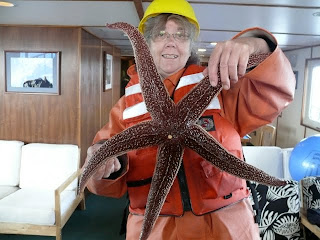_____
The 76th Annual Meeting of the American Malacological Society
The 43rd Annual Meeting of the Western Society of Malacologists
_____
26-30 June 2010, San Diego, CA
AMS/WSM 2010
*** Submission Deadline: 3 May 2010 ***
~~~~~~~~~~~~~~~~~~~~~~~~~~~~~~~~~~~
http://www.malacological.org/meetings
~~~~~~~~~~~~~~~~~~~~~~~~~~~~~~~~~~~
Call for Abstracts
As the current Presidents of AMS and WSM, it is our pleasure to announce the upcoming joint 76th Annual Meeting of the American Malacological Society and 43rd Annual Meeting of the Western Society of Malacologists to be held on the campus of San Diego State University (http://as.sdsu.edu/aztec/forms/SDSU_Campus_Map-Parking.pdf) in San Diego, California. The meeting will kick off in style with a welcome reception on the evening of Saturday, June 26th, with scientific sessions held from Sunday (June 27th) to noon on Wednesday (June 30th). Stay the following day, Thursday, July 1st, for organized or informal excursions in the San Diego area.
Venue. - We are fortunate to have reserved our meeting site at San Diego State University. The new SDSU Aztec Conference Center is attractive and easily accessible by car or via public transportation. SDSU has both new suites and somewhat less expensive older dorms, but both are affordable. We have negotiated a great rate for on-campus residents that includes all meals in a modern dining cafeteria. It is very nice! We encourage meeting attendees to select this option in order to promote interactions between meeting participants, but there are also many hotels within fairly close proximity of the meeting site, and non-resident attendees can choose whether to purchase an optional lunch plan during registration, or to plan to forage on their own in a variety of other restaurants or fast food options near the conference center. Public transit options include a new trolley stop, which is immediately adjacent to the conference center or a brief walk across a footbridge from the dorms. The trolley connects directly to the downtown train station and airport (search in Google maps for SDSU Transit Center, San Diego), and provides easy access to the outstanding selection of restaurants and bars in famous Old Town, and in the Gaslamp Quarter in downtown San Diego, about 29 minutes by trolley. The meeting will be affordable for students and close to world-class ocean beaches and other well known attractions that make San Diego such a popular destination to visit.
Sessions. - Scientific sessions are historically great at joint AMS/WSM West Coast meetings.--Dr. Peter Marko (Assistant Professor, Clemson University) and Dr. Alan Kohn (Professor Emeritus, University of Washington) are organizing an AMS-sponsored symposium on "Biogeography of the Pacific." An impressive line-up of speakers has been confirmed, and these include Dr. Thomas Duda, Dr. Suzanne Williams, Dr. Christine Parent, Dr. Cynthia Trowbridge, Dr. David Jacobs, and Dr. Alan Kohn. These leading scientists have agreed to present their research on Pacific molluscan biogeography on June 29. This symposium and associated contributed paper and poster sessions are expected to be a memorable highlight of the meeting. Please check the corresponding box on the abstract submission form if you would like to present a contributed paper or poster in a session associated with this symposium.
--Dr. Jennifer Burnaford (Assistant Professor, Cal State Fullerton) is organizing a complementary special session on invasive molluscs, for which about eight speakers have already been confirmed. Please check the corresponding box on the abstract submission form if you would like to present a contributed paper in this session.
--Dr. Eric Gonzales (Postdoctoral Researcher, UC Berkeley) will present a timely Student Workshop, "Genomic Tools for Molluscan Ecology and Evolution."
--Lindsey Groves (Dept. Malacology, LACMNH) will be organizing a session on Molluscan Paleontology 2010. Papers with a paleobiogeographic emphasis are particularly encouraged. Paleozoic, Mesozoic, and Cenozoic are all welcome.
--Further details will be on the meeting website very soon at: http://www.malacological.org/meetings/
Other events include ever-popular auction, banquet, reprint sales, and other fun activities. Please plan to attend and spread the word. Contact us if you would like to ship donations for the auction. Help us to make this joint meeting a success by planning to attend, responding when the call for contributed talks and posters is announced, getting involved, and especially encouraging students and colleagues, including those from Latin American countries, to participate. If you have any questions, please feel free to contact the meeting organizers, Doug Eernisse at deernisse@fullerton.edu for AMS or George Kennedy at gkennedy@bfsa-ca.com for WSM.
See you in San Diego! Doug Eernisse Professor of Biology, Cal State Fullerton President AMS
George Kennedy Senior Paleontologist, BFSA President WSM



.jpg)